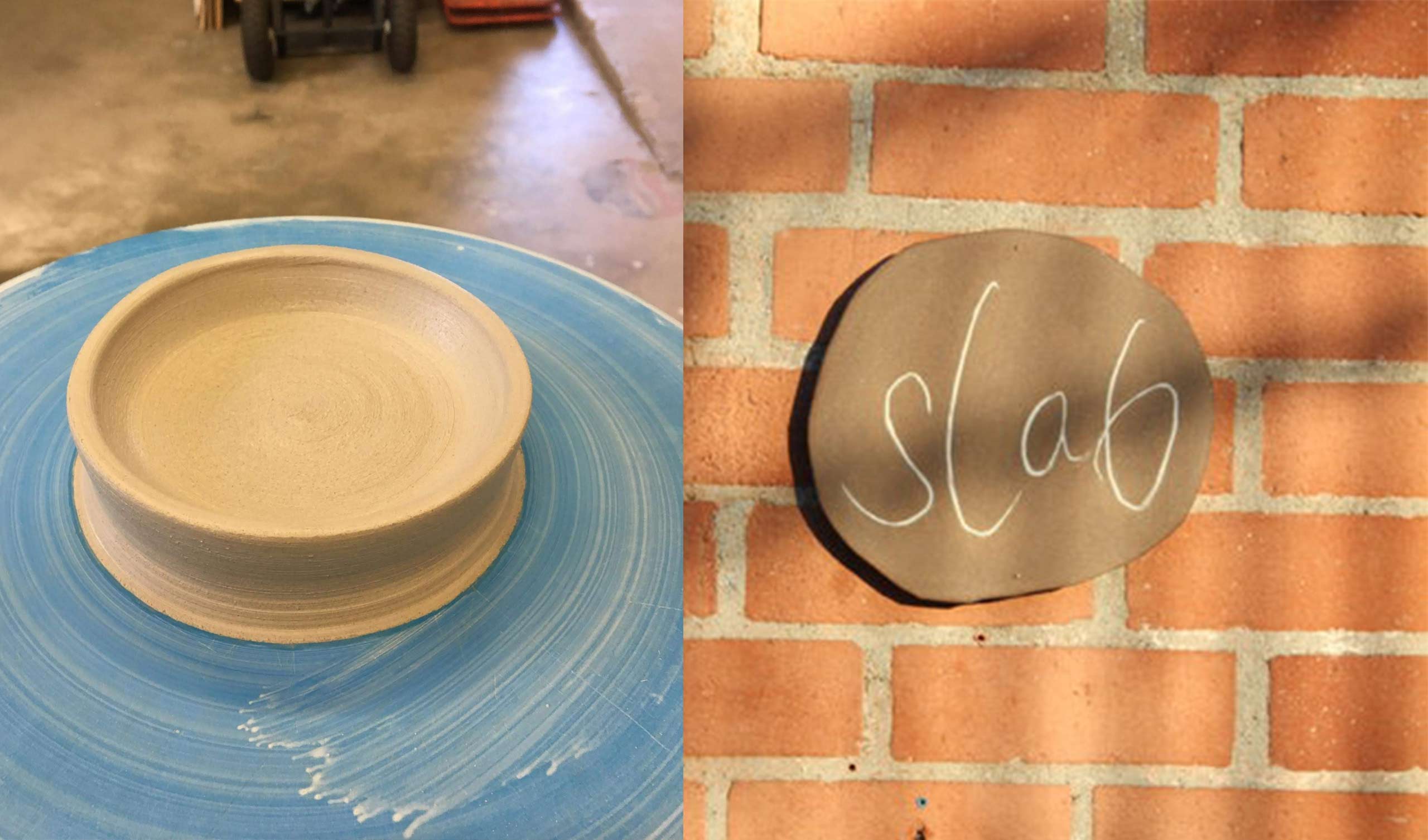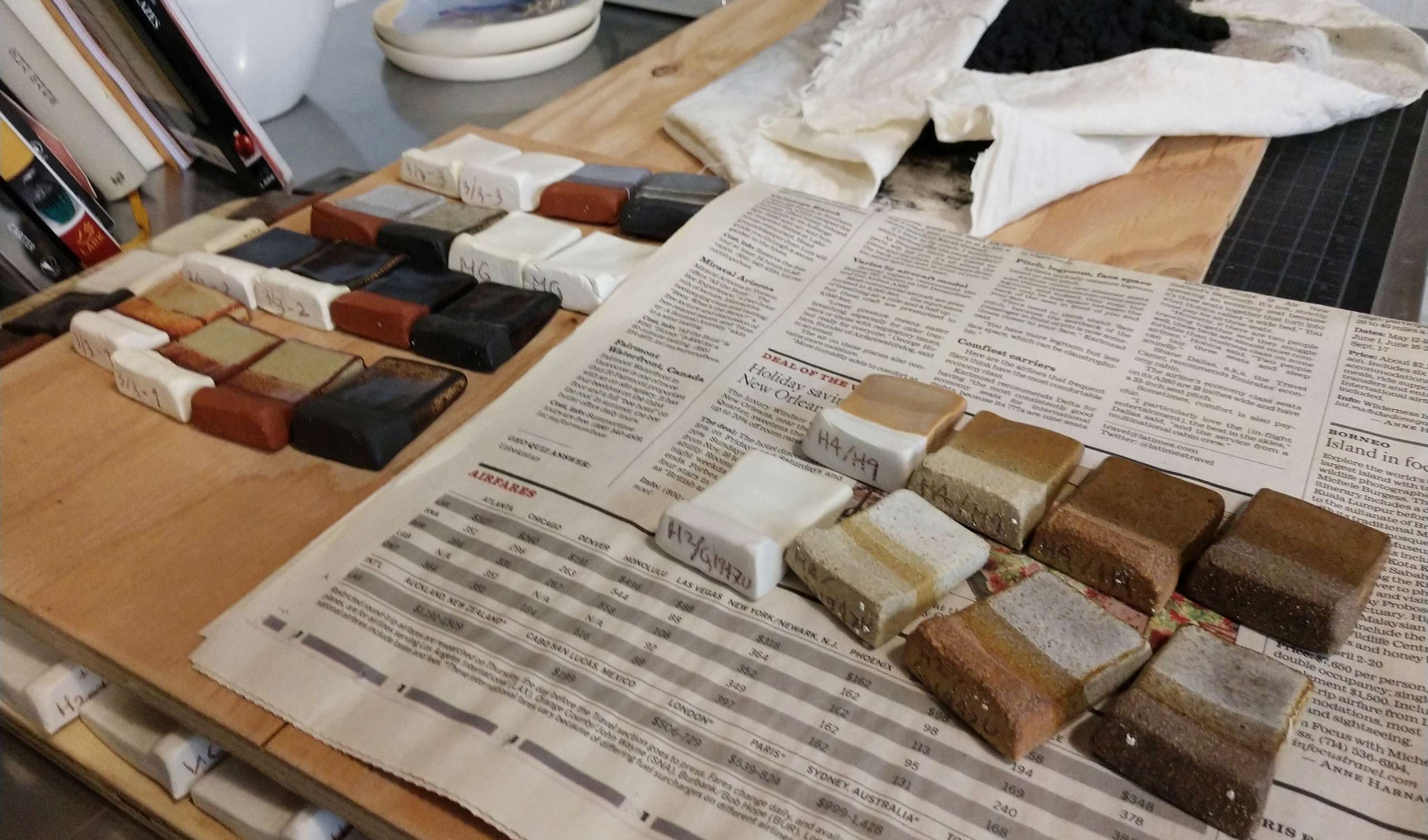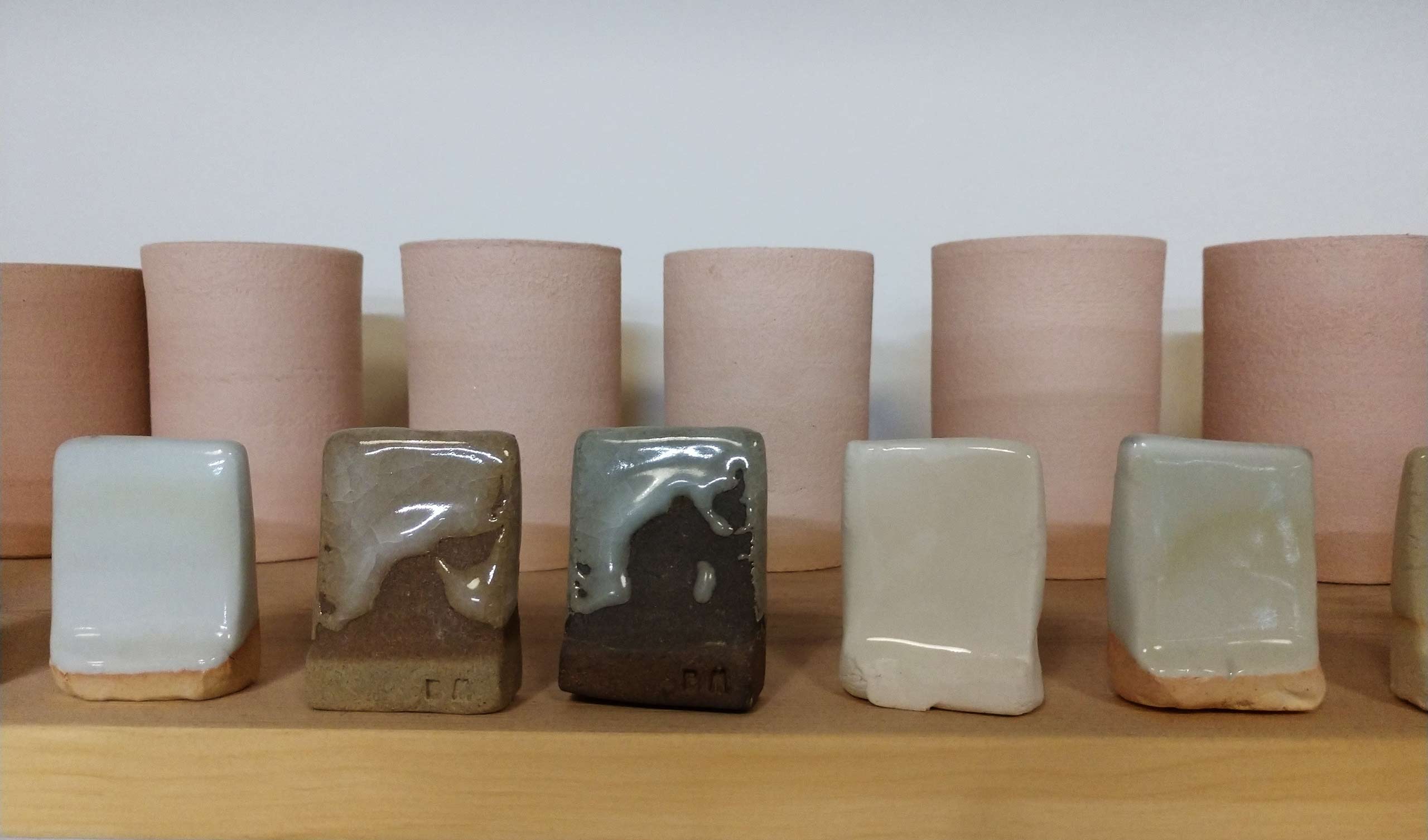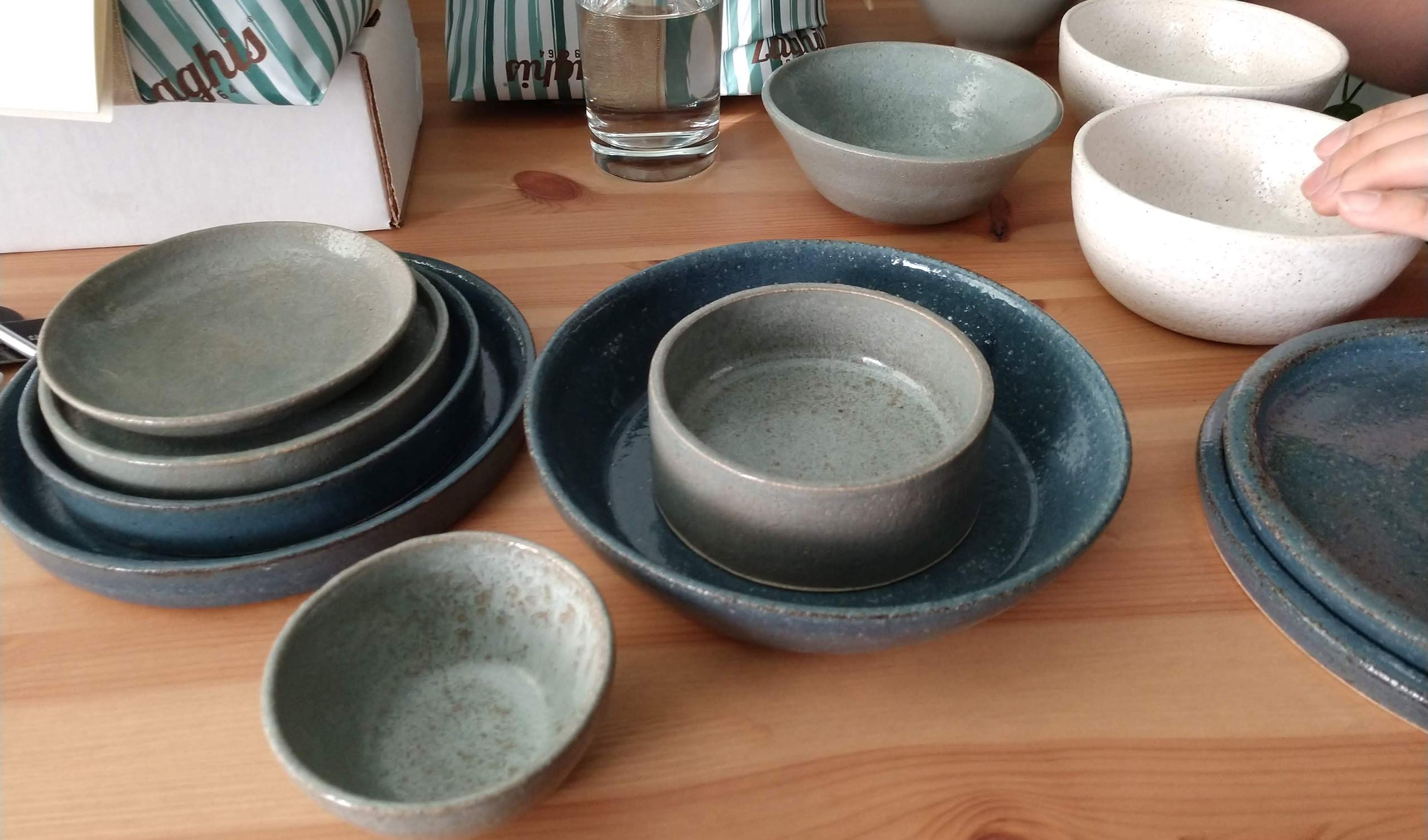By Stephanie Lin
Last Spring, I took a walk in my neighborhood on Jefferson Boulevard in Los Angeles. As the traffic whizzed by, I saw that someone was trimming a palm tree on the sidewalk. The leaves fell onto a pile, large palms with accordion folds and sharp thorns on the stems – this was the first time I had noticed the beauty of the fan palm, up close. The man trimming the palm offered me a leaf and invited me into his wife’s ceramics studio next door. In a brief moment, I had come upon a community of local L.A. potters and a new way of appreciating the mundane yet extraordinary process of wheel throwing.

Over the next few months, I took wheel-throwing classes at Slab, a ceramics lab owned by two potters, Asami and Goya. Going through the multi-layered process of hand-making ceramics was a laborious and rewarding experience in seeing elemental materials transformed into functional pieces. How did a lump of clay become a thing as useful as a cup?
Process:
- Throw – weigh, knead, center, cone, pull, dry
- Trim – center, trim, dry
- Bisque Fire
- Glaze – sand, glaze, dry, smooth, finish
- Glaze Fire
- Finish – sand, clean

Each step in the wheel throwing process required full attention and focus. I learned that the integrity of the first step had an additive effect to each of the following steps. For example, in the kneading process, if the air bubbles had not been thoroughly kneaded out, there would be a problem with centering; if the piece started off-centered, it would become more and more off-centered with each turn of the wheel, and so on. The sensitive quality of clay material gives it possibility and at the same time, a tendency to pursue entropy. Investing time and attention to each step, I learned, would benefit the entire process — something that applies to almost any process of creativity, where experimental movement is required in balance with a rigorous practice.


In The Nature & Art of Workmanship, David Pyne defines craft as “simply any kind of technique or apparatus, in which the quality of the result is not predetermined, but depends on judgment, dexterity, and care which the maker exercises… The essential idea is that the quality of the result is continually at risk during the process of making.” This could be an apt description of the wheel throwing process, where each resulting product is unique, from its shape to the way a particular glaze was picked up by a surface in a brief turn of the wrist.
From this experience, I’ve learned to appreciate the craft and culture of wheel throwing ceramics. The beautiful hand-made cups, bowls, and dishes out in the world – when seen up close, each is a miracle of artistry and science born from communities of potters over years and generations of practice. It’s also a reminder to pause and realize all things are shaped by the process that created them. A moment of time and care in the beginning always impacts the end result.

